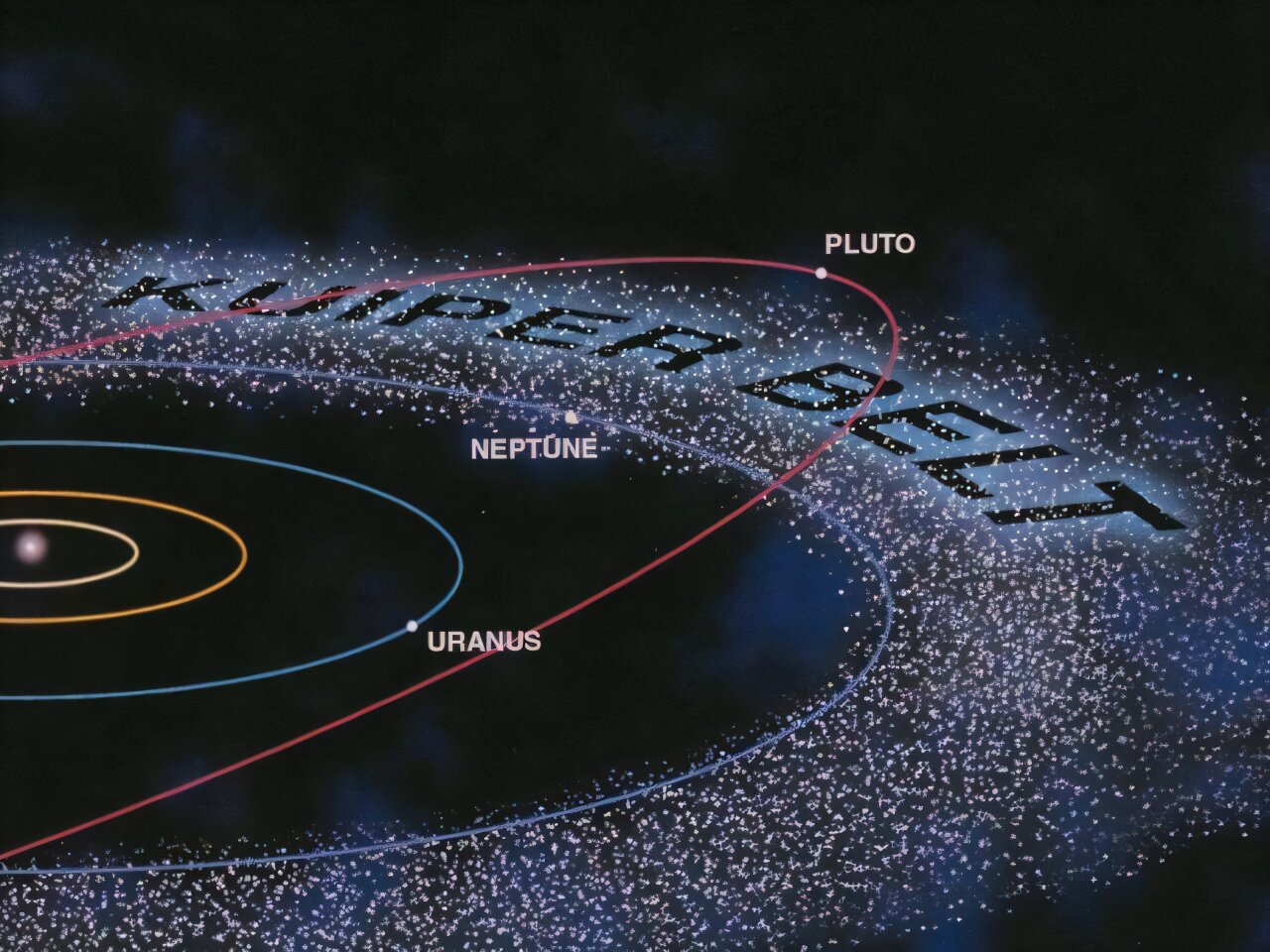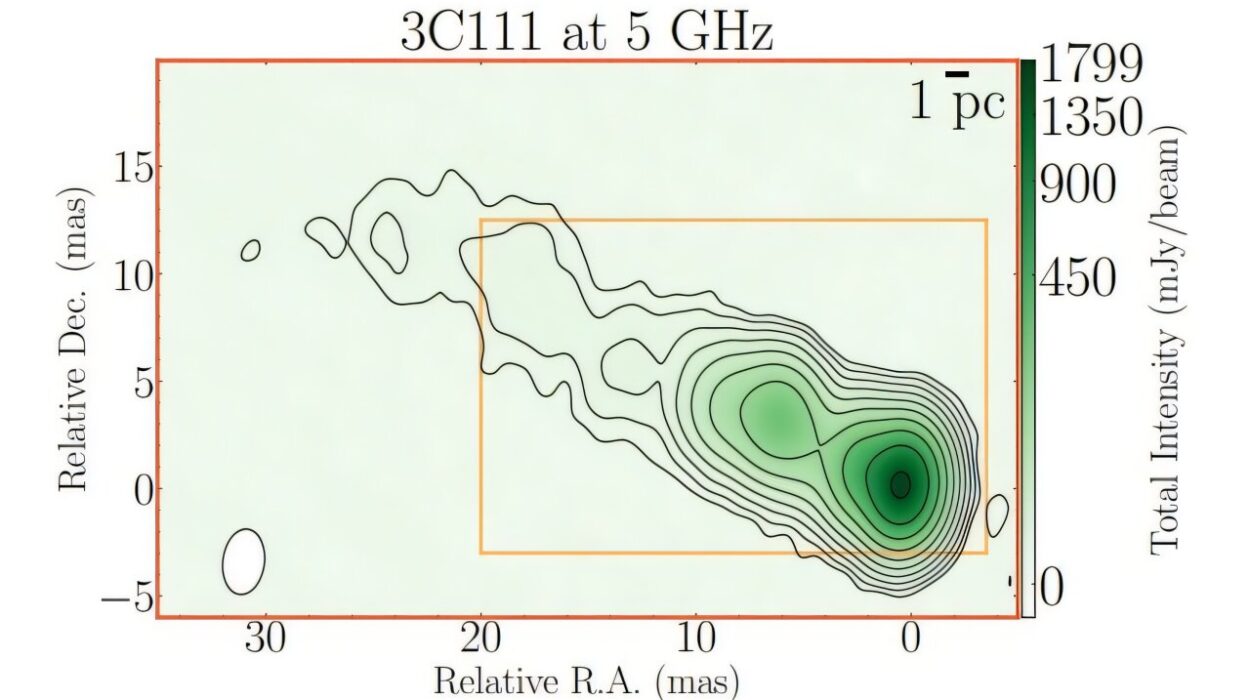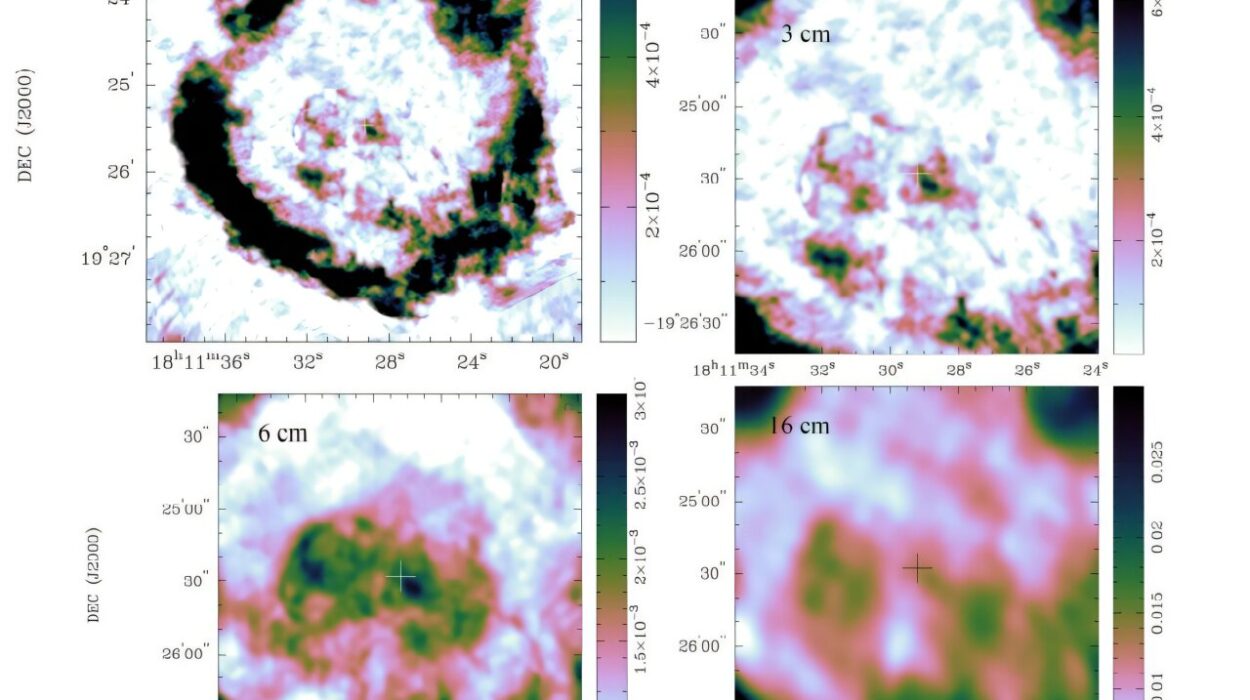Beyond the planets of our solar system lies a vast and mysterious region known as the Kuiper Belt, a cold and icy expanse stretching from the orbit of Neptune to around 50 astronomical units (AU) from the Sun. For years, scientists have considered this region as a relic—an untouched remnant from the early days of the solar system. But despite decades of study, the Kuiper Belt continues to surprise us.
In 2011, astronomers observed something peculiar: a dense cluster of objects at around 44 AU, nestled within the Kuiper Belt. They dubbed this region the “kernel” and quickly realized it was unlike other parts of the belt. The objects here had very different orbital characteristics—more circular orbits and a closer alignment with the solar plane. They seemed calm, almost stable, in comparison to the more erratic movements of other Kuiper Belt objects (KBOs). At the time, the kernel was thought to be part of a larger, dynamically cold population of objects, but questions remained about its full nature.
Digging Deeper into the Kuiper Belt’s Secrets
Fast forward to today, and astronomers are still unraveling the mystery of this strange region. A new study, recently published as a preprint paper on arXiv, delves into the structure of the Kuiper Belt in search of more hidden patterns. The team of researchers took a bold approach, using a sophisticated clustering algorithm to explore the data from 1,650 classical KBOs—objects that orbit the Sun in a relatively stable manner.
The technique they employed is called DBSCAN (Density-Based Spatial Clustering of Applications with Noise), which had been used in other astronomical contexts but not yet applied to the Kuiper Belt. By calculating the orbital properties of these KBOs—such as their eccentricity (how much their orbits stretch out), inclination (the tilt of their orbits relative to the solar plane), and other factors—the researchers sought to uncover any hidden clusters within the Kuiper Belt.
What they found was astonishing: not only did they uncover the kernel, but they also identified an entirely new feature right next to it—a region they call the “inner kernel.” Situated around 43 AU, this newly discovered structure appears to be distinct from the kernel in several ways. Most notably, it has a narrower range of orbital eccentricities, suggesting it may represent a separate population of KBOs.
In fact, the team estimates that the inner kernel may contain up to 10% of all classical KBOs. This discovery, while still tentative, could be the key to unlocking a deeper understanding of how the Kuiper Belt formed and how its objects are distributed. But the story doesn’t end there.
The Line Between Kernel and Inner Kernel
As exciting as the discovery of the inner kernel is, it’s still shrouded in uncertainty. The key question that remains is whether the kernel and inner kernel are truly distinct or if they’re simply part of a larger, more complex structure. The distinction between the two regions depends heavily on how the clustering algorithm was applied—a fact that the researchers acknowledge in their paper.
“The discovery of the inner kernel, described here, was achieved by using DBSCAN in a conditional manner—requiring that DBSCAN recover the kernel, and asking whether in those cases it simultaneously identified any other cluster(s),” the researchers explain. “However, removing this condition, it is unclear whether the inner kernel and the kernel are a single, combined structure, or actually two distinct ones.”
This nuance leaves open the possibility that what appears to be two separate regions might actually be one massive structure. The key to resolving this mystery lies in the details of the algorithm’s parameters and the interpretation of the data. The question of whether the inner kernel is a real feature, or just a result of the data analysis method, remains unanswered for now.
New Data Could Hold the Answer
As intriguing as this discovery is, it’s still too early to draw definitive conclusions. However, new data from upcoming surveys, particularly from the Vera C. Rubin Observatory, may provide the clarity needed to solve the riddle. This powerful observatory is poised to deliver more precise measurements of the Kuiper Belt, potentially confirming or refuting the existence of the inner kernel as a distinct entity.
For the researchers, however, the possibility of a second structure within the Kuiper Belt is significant, regardless of whether the inner kernel turns out to be an independent feature or simply part of the larger kernel. The team suggests two possible scenarios that could explain their findings: either the kernel is much larger than previously thought, or there is indeed an additional distinct structure within the cold classical Kuiper Belt.
“The inner kernel, as described here, is the additional component,” they affirm. In either case, the implications for our understanding of the Kuiper Belt would be profound, shedding new light on the distribution and characteristics of objects in this remote region of the solar system.
Why This Research Matters
The Kuiper Belt is more than just a distant collection of icy bodies. It’s a snapshot of the solar system’s early years, a time when the planets were still forming and the architecture of our cosmic neighborhood was being shaped. By studying the Kuiper Belt, we can glean valuable insights into the processes that governed the formation of not just our solar system, but others as well.
If the inner kernel turns out to be a separate structure, it would suggest that the Kuiper Belt is far more complicated than we thought, with distinct populations of objects behaving differently from one another. This discovery could help us understand how the solar system’s architecture was shaped by gravitational forces, collisions, and other dynamic processes in its infancy.
Moreover, as astronomers continue to explore the outer reaches of the solar system, each new finding builds on the last, offering a more complete picture of our celestial neighborhood. By unveiling new structures within the Kuiper Belt, researchers may be uncovering secrets that could not only explain the past but also help us understand the present and future dynamics of the solar system.
In the end, the hunt for the truth behind the kernel and the inner kernel is more than just a search for distant objects—it’s a quest to understand the very foundations of our cosmic home.
More information: Amir Siraj et al, The Inner Kernel of the Classical Kuiper Belt, arXiv (2025). DOI: 10.48550/arxiv.2511.07512






